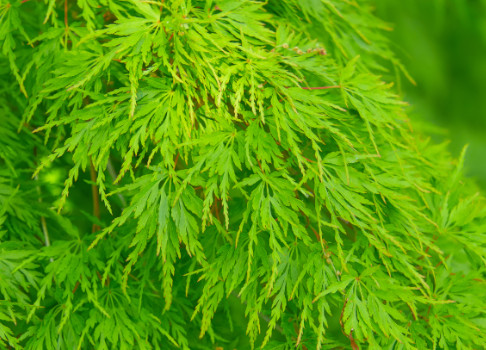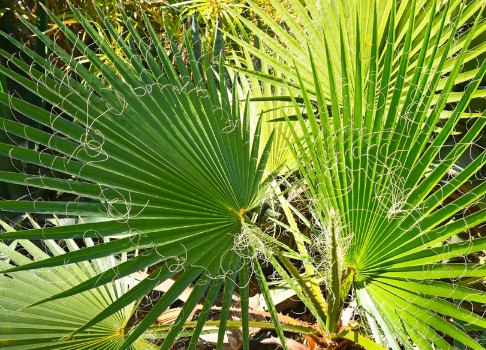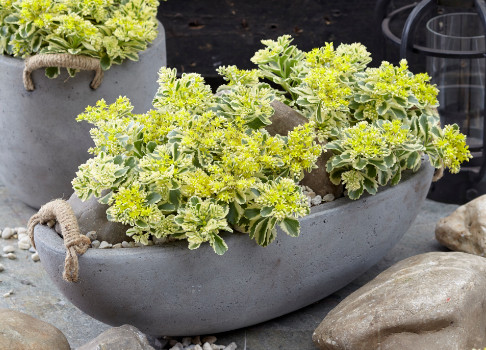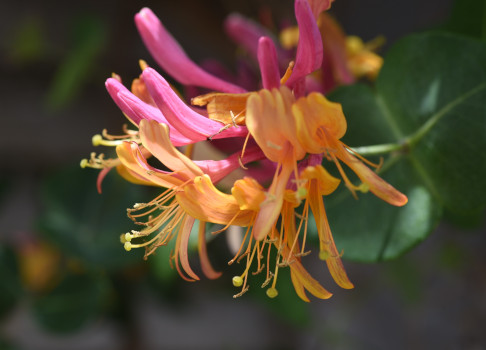How to Propagate
How to Propagate

INTRODUCTION TEST Imposing, unusual and dramatic, Urginea are a diverse family, most originate in dry arid areas of Europe and western Asia, seen growing in rocky coastal areas.
How To Propagate Basal Cuttings
During April, the strong basal shoots of herbaceous perennials make easy, quick-rooting cuttings. The tall forms of phlox are ideal candidates, and gardeners have long propagated them in this way to share with friends and neighbours. From July, you’ll see many gardens awash with their pink, purple and white flowers, and their perfume fills the evening air.
To take effective basal cuttings, choose a strong healthy plant and choose three of four basal shoots.

Step by Step:
- Make a clean cut as close to the base as possible – if your cut isn’t completely clean, neaten up with a sharp knife.
- Fill up some pots with a generous amount of compost. Use a stick or pencil to make a hole in the soil and gently plant your cuttings into position.
- Cover your soil with grit to deter those pesky pests and mist/water your cuttings regularly.
- If necessary, cover your pots with a clear plastic bag to retain moisture.
- Repot as they develop and until you can put them into the ground.
How To Propagate By Division
Division benefits our plants in two ways. It not only ensures consistent optimum health for our plants but will also provide us with the opportunity to multiply our favourites. It is possible to divide plants at any time of the year so long as they are kept well-watered.
Step by Step:
- It is vital you take care when dividing plants to ensure that the root systems are kept intact. Working from the crown, gently tease the plant with a standard garden fork, taking care not to damage the parent plant. Each plant will present us with individual levels of ease, and so it may be appropriate to use a sharp knife or another garden fork to help prise the clumps apart.
- Once you have separated the clumps, you should plant divisions as soon as possible and water well to set them firmly in place. Alternatively, you may pot them on to ensure improved growth, health and development, taking care to overwinter in a suitable environment such as greenhouse or conservatory.
How To Propagate By Grafting
Grafting takes a part of one plant (called the scion) and unites it with another plant (called the rootstock). The scion may be a single bud, a small twig bearing a few buds, a piece of stem or a terminal shoot (evergreen shrubs and trees).

Step by Step:
- Side-spliced grafting would usually take place during late winter or early spring before the sign of buds start to break. Scion-wood needs to be taken from healthy wood that is at least 1 year old.
- Cut the scion wood just above a bud into 15-25cm (6-10in) lengths.
- Cut the rootstock down to about 7.5cm (3in).
- Make a downward incision, roughly 3cm (1¼in) below the top of the rootstock.
- From the top of the rootstock, make a downward sloping cut to meet the first and disregard the remaining slither of wood.
- Take the scion-wood and make a cut along one side the same length as made on the rootstock.
- Make a short-angled cut at the base of the scion wood.
- Fit the base of the scion wood into the rootstock so that the cambiums (green layer just beneath the bark) meet. It is best if they touch on both sides but this is not essential and successful grafting can still be met if they only meet on one side. Ensure cuts are straight to ensure the scion and rootstock fit together.
- Wrap your graft with grafting tape, polythene strips or raffia and pain any exposed areas with grafting wax.
- If possible, place in a greenhouse and mist (not water) regularly. A successful graft can be seen in 6-8 weeks.
How To Propagate By Taking Hardwood Cuttings
Hardwood cuttings are an easy method of propagating deciduous climbers such as Lonicera, Jasmine, trees (willows and poplars) and shrubs such as Abelia and Cornus and can be taken during the dormant season from autumn through to winter. Hardwood cuttings can be grown outdoors where only healthy shoots should be chosen.

Step by Step:
- Take off growth with soft tips, cutting at the base below a single or pair of buds and cut into sections around 15-20cm long.
- The cut should be made at an angle, which should then be dipped in hormone rooting powder.
- Prepare an outdoor area to transfer your cuttings that is in a sheltered position with soil that is well-draining.
- Amend the soil with garden compost and a generous application of organic matter.
- You can then insert the cuttings into the group or into pots or containers with two thirds of the cutting below the surface.
How To Propagate By Layering
Layering is considered an easier technique of propagating new plants and plants that do not root well from cuttings such as Magnolia, Cornus, Daphne and Viburnum. Layered shoots are encouraged to produce roots whilst still attached to the parent plant. Layering may be undertaken during autumn or spring.
Step by Step:
- You should choose flexible young shoots from your plants and shrubs that are easily bent to the level of the soil. Mark the area where the shoot touches the soil with a cane or support. Around 30cm away from the tip of the shoot make an incision approximately 2.5-5cm along the stem to create a wedge. Apply hormone rooting powder to the incision and dig a shallow hole in the soil where the stem should be bent and pegged into place and then secured to the support. Cover the area with soil and water well so that the shoot is set firmly in place.
- A year or so later you should expect your plant to have developed a healthy root system. You should now be able to cut your layer from the parent plant and transfer to an area of choice or pot to ensure stronger and healthier growth.
How To Propagate Leaf Cuttings
Some plants (mainly house plants) can be propagated from a whole or part of a leaf. According to individual varieties, leaf cuttings can be taken early in the growing season although some can be propagated throughout the year.

Step by Step:
Part Leaf:
- Choose a healthy plant that has not been affected by pests or disease.
- Fill a clean container with relevant potting media such as seed or cutting compost.
- Choose a healthy and fully-grown leaf.
- Cut your leaf in half along the midrib and discard the remnants.
- Using a seed tray make a shallow insertion into the soil and gently place the leaf into place with the cut side facing down.
- Firm into place and water well, taking care not to waterlog the soil.
- Using a seed tray make a shallow trench and insert the leaf, cut side down and firm in.
- Put your container into a plastic bag and tie up loosely with an elastic band or similar.
- Keep in warm, dry and well-lit place out of direct sunlight.
- Keep moist and repot when ready.
Whole Leaf:
- Cut the leaves with the stalk intact from the parent plant.
- In clean pots, insert the base of each leaf.
- Firm into place and water well, taking care not to waterlog the soil.
- Using a seed tray make a shallow trench and insert the leaf, cut side down and firm in.
- Put your container into a plastic bag and tie up loosely with an elastic band or similar.
- Keep in warm, dry and well-lit place out of direct sunlight.
- Keep moist and repot when ready.
Succulents Step by Step:
- Leaf cuttings of succulents should be left a day or two to thicken before potting.
- Insert into pots filled to three-quarters depth with two parts cactus compost to one-part fine grit, topped off with fine grit.
- Do not cover. Place in warm position and good light. Keep the compost just slightly moist.

How To Propagate Root Cuttings

Root cuttings are the key method of propagation for a variety of herbaceous perennial plants during late autumn and early winter whilst dormant. They are used to propagate plants that will produce new shoots from the roots.
Step by Step:
- It is best if you choose vigorous clumps by lifting the plant and washing the roots. It is best to select roots that are the thickness of around 1cm, cutting it close to the crown.
- Remove a third of the root system from your plant and replace the original plant back into the ground. Each root should then be cut into 5cm lengths with a horizontal cut at the upper end and an angled cut at the lower end.
- Ensure you have filled your containers with some cuttings compost and insert the root cuttings so that the horizontal end if just below the surface of the compost. Water your roots lightly and place in a cold frame.
- Root cuttings can be slow to develop so you will need to wait until the following spring to pot up each individual cutting to show signs of growth and are well-rooted. Grow plants on and plant out in the following year.
How To Propagate Semi-hardwood Cuttings

Semi-hardwood cuttings are a similar method to softwood cuttings, although this technique will take a little longer to form roots, as the material is between a softwood and a woody stage.
Step by Step:
- Choose a healthy plant that has not been affected by pests or disease and which has no flowers or flower buds.
- Cut the side shoots from the parent plant ensuring that the cut is straight and clean.
- Dip the cuttings in rooting gel or hormone powder.
- Fill a clean container with relevant potting media and make a hole for each of your cuttings.
- Gently plant your cuttings and firm into place.
- Water well ensuring not to saturate.
- Put your container into a plastic bag and tie up loosely with an elastic band or similar.
- Keep in warm, dry and well-lit place out of direct sunlight.
- Keep moist and repot when ready.
How To Propagate Semi-ripe Cuttings

Semi-ripe cuttings are the best way to propagate a wide variety of hardy climbers (Trachelospermum), groundcover plants (Lonicera), shrubs (Magnolia). Semi-ripe cuttings should be taken in late summer until mid autumn.
Step by Step:
There are four different types of semi ripe cuttings. You may need to do a little research to ascertain which method is most suitable for the plants you wish to propagate:
- Basic: This is where you should cut below a leaf where you will have a ready made cutting.
- Basal: This is where you should cut the shoot at the base.
- Heel: This is where the cutting is pulled away from a section of the stem.
- Mallet: This is where a leaf and its stem are planted as a cutting.
Regardless of the type of cutting you take you will need to place them in a plastic bag as soon as they have been removed from the main plant. Keep these in a cool dry environment until you are able to pot them on. It is recommended they are potted as soon as possible. It is recommended that you dip the bottom end of your cutting into hormone rooting powder and then transfer them into suitable containers that are filled with cuttings compost and a generous amount of sand. Water thoroughly and deeply.
Your cuttings should then be placed within a greenhouse or similar environment out of the view of direct sunlight. Ensure they compost is damp but not over watered. They may benefit from bottom heat if taken in mid-autumn as the temperatures will often drop and may cause slower growth and development from your cuttings.
Tip: Before potting on, place cuttings rooted in a cold greenhouse or under fleece to harden them off.
How To Propagate Softwood Cuttings
Softwood cuttings are used to propagate mainly deciduous shrubs such as Buddleja, Perovskia, Hydrangea and Fuchsia and a select number of trees (deciduous magnolia and maples) during early spring time. This method has the highest success rate of any stem cutting and is considered the best method for species that are difficult to replicate.
Step by Step:
To propagate successfully using this method, you should take material from the flexible young shoot tips.
- Pinch out the soft tip and dip in a hormone rooting powder or liquid. Make sure you have a container with cuttings compost.
- Make a hole for your cutting and insert into your container.
- These should then be watered thoroughly and labelled.
- Place the container with your cutting into a closed propagator case with a temperature ranging from 18-24°C (64-75F). As these cuttings should be kept in a humid environment you can cover the case in a plastic bag, making sure to remove the bag twice weekly for around 10-15 minutes. It is vital that your cuttings are kept in partial sunlight with soil that is kept moist for 6-10 weeks.
- Once you are happy that your cuttings have rooted successfully you can harden these off for a fortnight and pot them on individually. Increase the ventilation they are exposed to and remove dead or rotting foliage on a regular basis.





